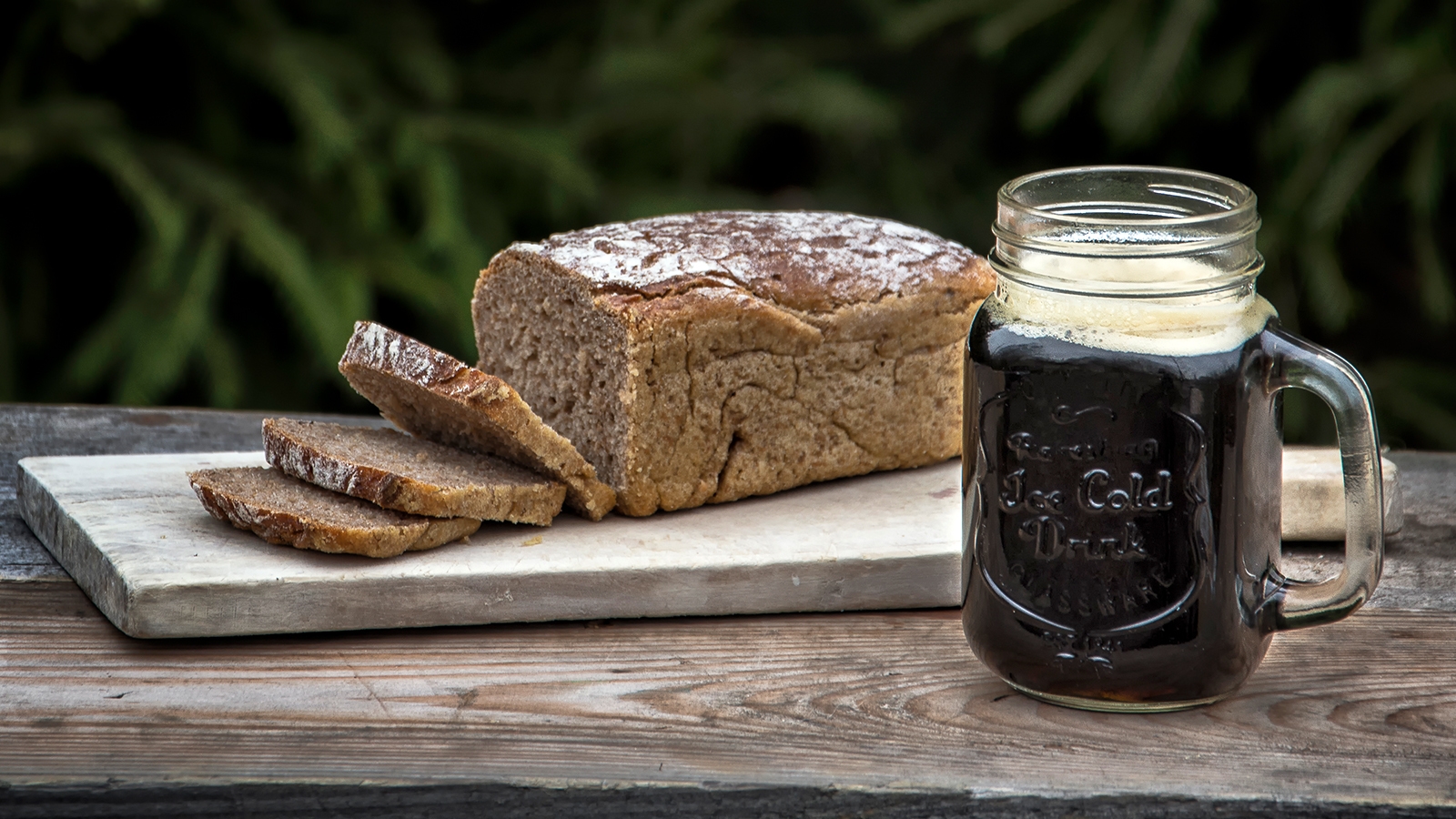Very few dishes in Ashkenazi culture have stood the test of time, with many having fallen to the wayside. Some dishes have become culinary artifacts, such as chopped liver and kishke, to be paraded out at holidays and family get-togethers, for nostalgic purposes only. Other dishes have been almost completely wiped from public conscience. Today we are going to take a look at some of these forgotten Ashkenazi dishes and understand why they fell out of favor.
Helzel
So what is helzel exactly? This stuffed sausage-like dish is a chicken neck skin stuffed with flour, semolina, bread crumbs, schmaltz and fried onions, all sewn up by hand — almost like a Jewish haggis. Before the invention of synthetic sausage casings, frugal cooks would use the leftover skin from the chicken’s neck as a casing, which, unlike cellulose casings, is packed with flavor and juices. This clever use of the chicken neck ensured that no part of the chicken would go to waste. The name actually derives from the word “heldzl,” which means neck in Yiddish.
At its peak, helzel was as common a sight in Jewish households as kishke (stuffed derma). But over time, chicken neck skin lost popularity in favor of the new synthetic sausage casings, which became the default for homemade sausages. Along with kosher butchers starting to sell chickens by the cut, helzel slowly faded into obscurity.
Nowadays, the only helzel you can likely get your hands on is the schmaltz-infused stuffing rather than the chicken casing, which is most commonly used to stuff chicken or eaten as a side dish for festive meals.
The Nosher celebrates the traditions and recipes that have brought Jews together for centuries. Donate today to keep The Nosher's stories and recipes accessible to all.
Kvass
Move over, kombucha! We’ve got a fermented drink that’s been around for centuries and deserves some major recognition. Say hello to kvass, the tangy beverage made from fermented rye bread. This fizzy concoction might sound strange, but it’s one of the OG probiotic drinks.
The word “kvass” derives from the Yiddish word for sour. The traditional preparation of the drink uses leftover rye bread and malt, leaving them soaked in hot water overnight. It became a popular drink in Russia, Ukraine and even some parts of China, with some people adding tart lemon peels and others adding honey or sugar to taste.
The drink was so popular that in famed Jewish playwright Sholom Aleichem’s story “Motl Peysi, the Cantor’s Son,” we read of Eliyahu, a Jewish shop owner who hatched a plan to make a fortune selling the tasty drink from a little Russian kiosk. The story details the plan’s miserable failure when, one by one, thirsty villagers craving delicious kvass would sneak in and steal a drink before diluting the barrel, slowly but surely leaving it tasteless.
As sodas like Coca-Cola and ginger ale became more readily available, the time-consuming kvass went out of style. But while the bread might be stale, the flavor is anything but! It’s like our ancestors knew about gut health before it became a trend.
Eyerlekh
If you’ve never tasted eyerlekh, you’re missing out on a golden opportunity — literally! Yiddish for “little eggs,” eyerlekh are the golden unhatched eggs found inside chickens. What makes them so unique is that they don’t have any egg white, and rather than being runny like a typical yolk, they are thick and creamy like melted cheese. In Ashkenazi Europe, these little orange spheres were the most sought-after part of the chicken. When dropped into a warm chicken soup, they would firm up and become a delicious treat for a family to fight over.
Today, however, eyerlekh can’t be found anywhere. Not in the supermarket or the butcher; even in Poland, it has become illegal to sell eyerlekh today since they can’t be tested for salmonella. Due to its rarity, it has recently become a sort of unattainable foodie catnip, with fine dining establishments such as Michelin Starred Blue Hill in New York being one of the first to include it on their menu.
While these old school Ashkenazi dishes might not be on every menu these days, that’s no reason to let them fade away into obscurity. They’re little pieces of culinary history that connect us to our roots and remind us of the unique experiences our ancestors had in the kitchen. We live in a time where being self-sufficient and waste free is all-important, and with drinks such as kvass and dishes such as helzel utilizing the oft-forgotten and discarded elements of our day-to-day meals, there is an important lesson in resourcefulness for us to learn from our Jewish ancestors.
So call up your bubbe, dig out those old family recipes, and give helzel, kvass and eyerlekh a well-deserved comeback tour in your kitchen. It’s not just about the food — it’s about keeping our heritage alive, one scrumptious bite at a time.



